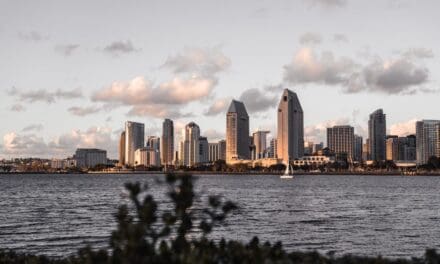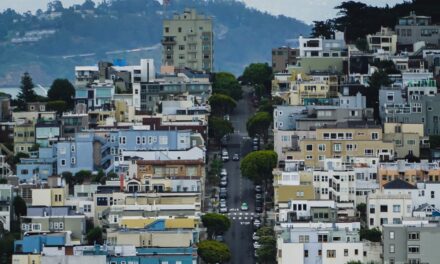California is one of the more iconic states in the United States. It’s home to many attractions that are famous across the world, such as Hollywood, the Hollywood Walk of Fame, and Disneyland. However, California is also known for its history of having massive earthquakes, most notably the 1906 earthquake in San Francisco. But are earthquakes common across all of California, or is there a specific part where earthquakes most commonly occur?
The part of California that has the most earthquakes is the Greater Bay Area, along the West Coast of California. The frequent earthquake activity in that region is because it sits in between two major fault lines.
The intensity of earthquakes varies greatly, and not every earthquake recorded is catastrophic. But it is not the earthquakes themselves that cause concern among residents who live in the Greater Bay Area. Keep reading to understand how widespread the damage from an earthquake could potentially be.
Earthquakes Common in Greater Bay Area?
California is a highly volatile state when it comes to earthquakes. Of the 15,700 known faults within the state, at least 500 of them are active. Fault lines are so common in California that the majority of Californians live within 30 miles of an active fault.
Because of the frequency of active faults in California, there is a greater than 99 percent chance of a 6.7 earthquake occurring in California.
The most infamous fault in California is the San Andreas fault which runs right through the Greater Bay Area and includes many popular cities such as:
- San Francisco
- San Jose
- Oakland
But that is not the only active fault in the Bay Area. Running nearly parallel to it, the Hayward Fault and the Calaveras Fault run up the east side of the Bay area, essentially pinning it between the two fault lines.
Because the Greater Bay Area is located between two major active fault lines, earthquake activity in this region is among the highest in the United States.
Likelihood of Earthquake Hitting Bay Area
As mentioned before, there is a more than 99 percent chance of an earthquake occurring within the state of California.
However, as it relates to the Greater Bay Area, there is a 72 percent chance of a 6.7 magnitude earthquake or greater occurring. Scientists estimate that starting in 2014, there will be a major earthquake in the Bay Area within the next thirty years.
San Francisco, a prominent city in the Bay area, is at the greatest risk. Scientists believe that as it relates to San Francisco specifically, there is a 98 percent chance of at least a 6.0 magnitude earthquake occurring and a 51 percent chance of a 7.0 magnitude occurring within that thirty-year span.
Bay Area High Risk for Earthquake
The Greater Bay Area is directly located on three of the most active faults in the world. The San Andreas fault, The Calaveras Fault and the Hayward Fault. The San Andreas fault, which is one of the largest and most volatile faults globally, runs directly through San Francisco.
The San Andreas fault is more than 800 miles long and is thirty million years old. It has produced two of the biggest earthquakes ever recorded in California; the 1857 earthquake in Tejon, California, and the 1906 earthquake in San Francisco, both recording a 7.9 magnitude.
The San Andreas fault is expected to produce another massive earthquake by the year 2030.
The Hayward Fault produces five major earthquakes every 150 years, with the last recorded in 1868, which means it is also primed for another major earthquake very soon.
What Hazards During Earthquake?
Because of the frequency of earthquakes and the imminent danger of another major quake looming in the near future, residents in the Greater Bay Area need to make sure that they are as prepared as possible to deal with an earthquake at a moment’s notice.
When an earthquake strikes, the initial rumblings could topple buildings and destroy homes. As terrifying as that may be, what occurs after the earthquake could be just as devastating.
Aftershocks are common occurrences, especially after major earthquakes, and could last up to weeks.
Earthquakes can also cause liquefaction, which is a phenomenon where wet, loosely packed soil turns into liquid and can produce major landslides.
Part of California that Risks Earthquake?
The area that is at the greatest risk for an earthquake is the Greater Bay Area. The Greater Bay Area is located in between three major active fault lines. San Francisco has the highest risk of an earthquake as it is located directly on the San Andreas fault, one of the most volatile in the world.
Because of its location relative to major fault lines, the Greater Bay Area experiences many earthquakes year-round.






